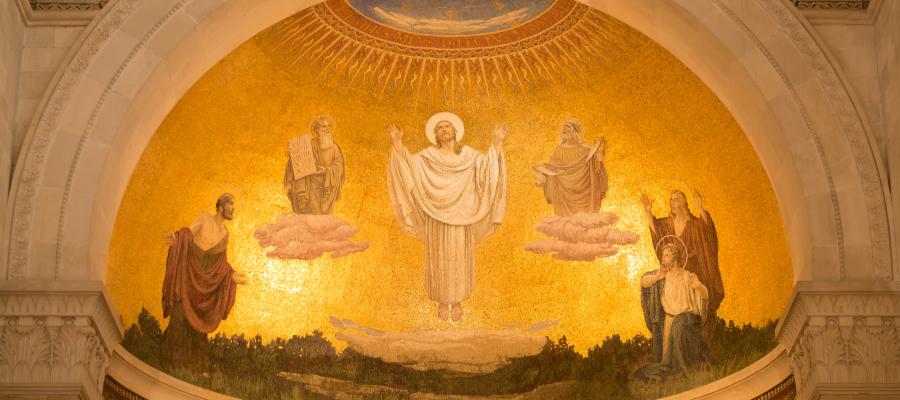
We Are Destined For More
by Father Brian J. Soliven on Sunday March 16, 2025
The Transfiguration of Jesus Christ on Mount Tabor is one of the most profound and awe-inspiring events in the Christian faith, capturing both the mystery of Christ's divinity and the hope of human transformation. As recounted in the Gospels, Jesus ascended the mountain with Peter, James, and John, where He was transfigured before them—His face shining like the sun and His garments becoming as white as light (Cf. Luke 9:29). During this moment, Moses and Elijah appeared, speaking with Him, and a voice from the cloud declared, "This is my beloved Son, with whom I am well pleased; listen to him."
For the early Church Fathers, the Transfiguration was not merely a miraculous spectacle, but a profound revelation of the nature of Christ and a symbol of the salvation He offers. St. Athanasius, writing in the 4th century, emphasized that Jesus did not come to earth only to teach or to suffer, but to "divinize" human nature. The Transfiguration served as a glimpse into this reality—the glory of God made visible in Christ, showing that humanity, united with Christ, could share in this divine radiance. The Fathers understood the Transfiguration as a foretaste of the resurrection, where the glory that Christ revealed on Mount Tabor would fully be manifested at the end of time.
In the writings of St. Gregory, who was the Bishop of Nyssa between 372-376, we find that the Transfiguration is a symbolic revelation of the transformation of the believer’s soul. He viewed it as a picture of what every Christian is called to experience—becoming "partakers of the divine nature" (2 Peter 1:4) through the grace of Christ. The event on Mount Tabor invites all believers to look beyond the surface of their earthly existence and to recognize the potential for divine transformation within themselves. Just as Christ’s divine glory shone through His human form, so too can God’s light shine through human lives when we align ourselves with Christ and His love.
The Transfiguration also has a pastoral dimension. For the apostles, it was a moment of revelation in the midst of uncertainty. The road ahead, filled with suffering and the mystery of the Cross, was not fully understood, but in the Transfiguration, the glory of Christ assured them that the suffering would not be the end. St. John Chrysostom pointed out that the Transfiguration strengthened the apostles' faith, helping them endure the trials to come. In our own struggles, this event reminds us that our own suffering is not without hope, for we too are called to share in Christ’s eternal glory.
Ultimately, the Transfiguration on Mount Tabor speaks to the promise of transformation that is central to the Christian life. It reveals that the divine potential within humanity is not only possible but destined to be realized in Christ. Through His transfigured glory, He calls us to rise above our limitations, to let His light shine in and through us, and to hope for the day when we, too, will be transfigured in the eternal light of God's presence.







